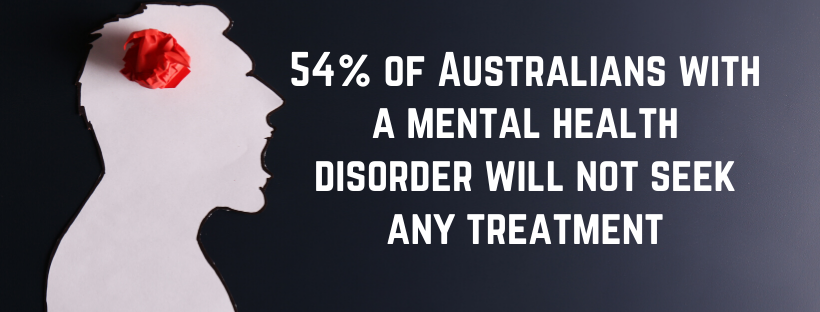Stress-related workers’ compensation claims have doubled in recent years in Australia, resulting in $146M in compensation claims annually. With many Australians currently working in isolation and experiencing uncertainty about their employment situation, it is likely that the incidence of low mental health will increase.
7.5% of all serious workers’ compensation claims are for work-related mental health conditions
No matter how well employees are managed, some people will experience low mental health in the workplace. Spotting the signs of stress or low mental health early on means managers can help address the issues before they escalate.
Managers who know their staff and regularly hold catch-ups or supervision meetings
to monitor work and well-being are well placed to spot any signs of stress or low mental health at an early stage. Often the key is a change in typical behaviour. Symptoms will vary, as each person’s experience of poor mental health is different, but there are some potential indicators to look out for:
Behavioural indicators:
Many employees don’t feel comfortable stating stress, anxiety or depression as their reason for absence, taking regular shorter absences due to an ongoing problem. Keep an eye out for the following signs:
- Taking a lot of sick days
- Arriving late, leaving early or taking extended lunch breaks
- Impaired or inconsistent performance
- Uncharacteristic problems with colleagues
- Disruptive or anti-social behaviour
- Low productivity and concentration
- Increase in risk-taking behaviour
Tip: Try monitoring employee absence patterns, as an isolated event is rarely a sign of mental illness. A symptom that occurs frequently, lasts for several weeks, or becomes a general pattern of an individual’s behaviour may indicate the onset of a more serious mental health problem that requires treatment.
Mental ill-health cost Australian workplaces $4.7 billion in absenteeism annually
Physical indicators:
People experiencing poor mental health may appear tired and lethargic, struggle to start or finish tasks and demonstrate an inability to make decisions. Some signs can include:
- Appear tired and lethargic
- Frequent headaches
- Appetite and weight changes
- Visible tension, trembling or nervous speech
- Changed sleeping patterns
- Sweating or constantly feeling cold
Tip: Try finding solutions to lighten the workload on your employees or distribute tasks more evenly among the team.
Psychological indicators:
Some people experience a change in mood and character when dealing with significant stress. This can vary from lashing out or bullying other staff, to skipping lunch breaks and having a more withdrawn personality than usual. Some signs to watch out for might include:
- Mood changes
- Tearfulness
- Indecision/inability to make decisions
- Increased sensitivity
- Uncharacteristic and erratic behaviour
- Loss of motivation
54% of Australians with a mental health disorder will not seek any treatment
Tip: Try holding regular, informal workshops to educate and openly discuss mental health issues.
To find out more about how to best manage the health and wellbeing of your employees and recognise the signs of poor mental health, contact Work Options on 9957 1300.

